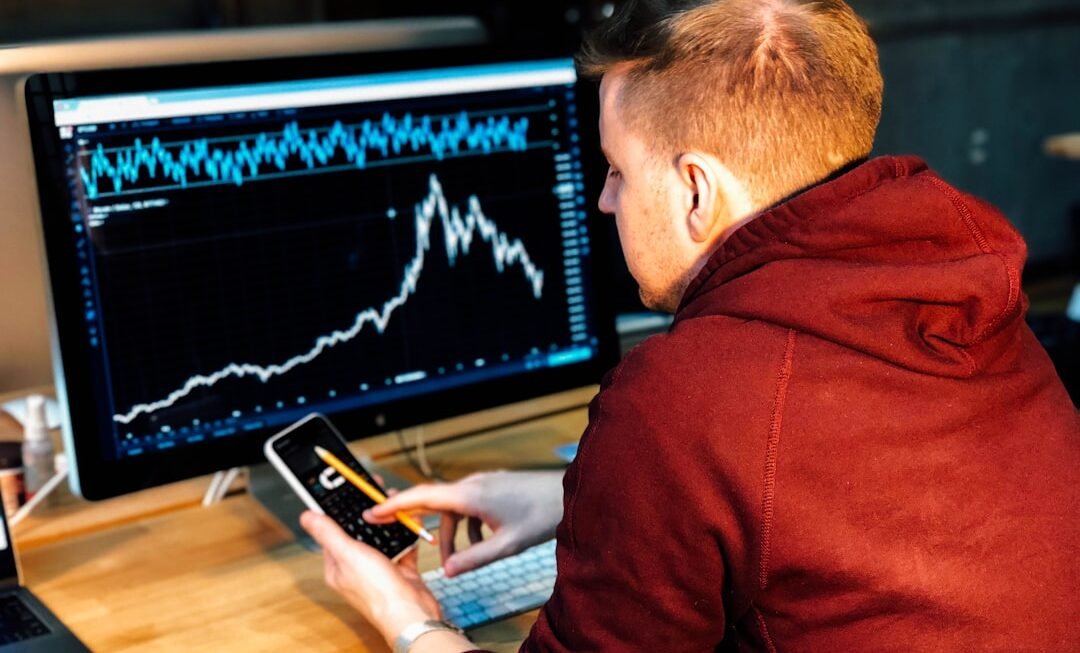Risk management is a critical component of trading, particularly in the realm of artificial intelligence (AI) trading. As financial markets become increasingly complex and volatile, the need for sophisticated risk management strategies has never been more pronounced. AI trading systems leverage advanced algorithms and machine learning techniques to analyze vast amounts of data, identify patterns, and execute trades at speeds unattainable by human traders.
However, the inherent risks associated with trading—such as market fluctuations, liquidity issues, and unexpected events—remain ever-present. Therefore, integrating robust risk management practices into AI trading systems is essential to safeguard investments and enhance overall performance. The integration of AI into trading introduces both opportunities and challenges.
On one hand, AI can process and analyze data far more efficiently than traditional methods, allowing for real-time decision-making that can capitalize on fleeting market opportunities. On the other hand, the reliance on algorithms raises concerns about overfitting, model bias, and the potential for systemic risks if many traders employ similar strategies. Consequently, effective risk management in AI trading must not only address these technical challenges but also incorporate traditional risk management principles to create a comprehensive framework that mitigates potential losses while maximizing returns.
Key Takeaways
- Risk management is crucial in AI trading to minimize potential losses and maximize returns.
- Stop loss is a tool used in AI trading to automatically sell a security when it reaches a certain price, helping to limit losses.
- Trailing stops in AI trading adjust the stop loss price as the security’s price moves, locking in profits and minimizing losses.
- Position sizing and leverage in AI trading help to control the amount of capital at risk and amplify potential returns.
- Diversification and asset allocation in AI trading spread risk across different assets and help to optimize risk-adjusted returns.
Understanding Stop Loss and its Role in AI Trading
Automation in Fast-Moving Markets
In the context of AI trading, stop losses can be programmed into algorithms to ensure that trades are executed according to predefined risk parameters. This automation is particularly beneficial in fast-moving markets where human intervention may not be timely enough to prevent significant losses.
Protecting Capital and Maintaining Discipline
By setting stop loss orders, traders can protect their capital and maintain a disciplined approach to trading. The effectiveness of stop loss orders in AI trading is enhanced by the ability of algorithms to analyze historical data and market conditions.
Dynamically Adjusting Stop Loss Levels
For instance, an AI trading system can evaluate the volatility of an asset and adjust stop loss levels accordingly. If an asset typically experiences large price swings, the algorithm might set a wider stop loss to avoid being prematurely triggered by normal market fluctuations. Conversely, for assets with lower volatility, tighter stop loss levels can be employed. This dynamic adjustment not only helps in preserving capital but also allows traders to remain in positions longer when market conditions are favorable.
Implementing Trailing Stops in AI Trading for Risk Management
Trailing stops represent an evolution of traditional stop loss orders, providing traders with a mechanism to lock in profits while still protecting against downside risk. A trailing stop moves with the market price of an asset; as the price increases, the stop loss level adjusts upward, maintaining a set distance from the current price. This feature is particularly advantageous in trending markets where prices may rise significantly before reversing.
In AI trading, implementing trailing stops can be automated through algorithms that continuously monitor price movements and adjust stop levels in real-time. The strategic use of trailing stops can enhance an AI trading system’s ability to capture gains while minimizing losses. For example, if an AI algorithm identifies a bullish trend in a stock and enters a long position, it can simultaneously set a trailing stop that follows the stock’s price at a specified percentage or dollar amount below its peak value.
This approach allows the trader to benefit from upward momentum while ensuring that if the market reverses, their position will be closed at a profit rather than allowing gains to evaporate. Moreover, trailing stops can be fine-tuned based on market conditions; during periods of high volatility, the trailing distance may be widened to avoid being stopped out prematurely.
Utilizing Position Sizing and Leverage in AI Trading
Position sizing is another critical aspect of risk management in trading that determines how much capital is allocated to a particular trade. In AI trading, algorithms can calculate optimal position sizes based on various factors such as account equity, risk tolerance, and the specific characteristics of the asset being traded. By employing position sizing techniques, traders can ensure that no single trade has the potential to significantly impact their overall portfolio.
This disciplined approach helps mitigate risks associated with overexposure to any one asset or market. Leverage further complicates position sizing but can also amplify returns when used judiciously. Leverage allows traders to control larger positions than their actual capital would permit by borrowing funds from a broker.
While this can lead to increased profits when trades are successful, it also magnifies losses when trades go against the trader. In AI trading systems, algorithms can incorporate leverage calculations into their risk management frameworks, ensuring that leveraged positions are sized appropriately relative to the trader’s overall risk profile. For instance, an AI algorithm might limit leverage based on recent volatility or drawdown history, thereby reducing the likelihood of catastrophic losses.
Diversification and Asset Allocation in AI Trading
Diversification is a cornerstone of effective risk management that involves spreading investments across various assets or asset classes to reduce exposure to any single investment’s risks. In AI trading, diversification can be achieved through algorithmic strategies that analyze correlations between different assets and allocate capital accordingly. By diversifying across uncorrelated assets—such as stocks, bonds, commodities, and currencies—traders can mitigate the impact of adverse movements in any one market segment.
Asset allocation is closely related to diversification and involves determining the optimal distribution of capital among different asset classes based on an investor’s risk tolerance and investment objectives. AI trading systems can utilize historical data and predictive analytics to inform asset allocation decisions dynamically. For example, an algorithm might analyze macroeconomic indicators and market trends to adjust allocations between equities and fixed income securities based on changing market conditions.
This proactive approach allows traders to adapt their strategies in real-time, enhancing their ability to manage risk effectively while pursuing growth opportunities.
Incorporating Risk-Reward Ratios in AI Trading Strategies
The risk-reward ratio is a crucial metric that helps traders assess the potential profitability of a trade relative to its risk exposure. In AI trading, algorithms can be programmed to calculate this ratio automatically before executing trades. A favorable risk-reward ratio indicates that the potential reward outweighs the potential risk, which is essential for long-term trading success.
For instance, a trader might aim for a risk-reward ratio of 1:3, meaning they are willing to risk $1 to potentially gain $3. Incorporating risk-reward ratios into AI trading strategies allows for more informed decision-making and enhances overall portfolio performance. Algorithms can evaluate historical performance data to identify patterns where certain risk-reward ratios have yielded favorable outcomes in specific market conditions.
By analyzing these patterns, AI systems can refine their entry and exit strategies accordingly. For example, if historical data shows that trades with a 1:2 risk-reward ratio performed well during periods of high volatility, the algorithm may prioritize such trades when similar conditions arise.
Leveraging Volatility and Market Analysis for Risk Management in AI Trading
Volatility is an inherent characteristic of financial markets that can present both opportunities and risks for traders. In AI trading, understanding and leveraging volatility is essential for effective risk management. Algorithms can analyze historical volatility data to identify periods of heightened market activity and adjust trading strategies accordingly.
For instance, during times of increased volatility, an AI system might implement tighter stop losses or reduce position sizes to mitigate potential losses. Market analysis plays a pivotal role in understanding volatility and its implications for trading strategies. AI algorithms can utilize various analytical techniques—such as technical analysis, sentiment analysis, and fundamental analysis—to gauge market conditions and forecast potential price movements.
By integrating these analyses into their decision-making processes, AI trading systems can better navigate volatile environments. For example, if sentiment analysis indicates growing bearish sentiment towards a particular asset while volatility spikes, an AI algorithm may choose to exit long positions or implement hedging strategies to protect against potential downturns.
The Role of Artificial Intelligence in Enhancing Risk Management in Trading
Artificial intelligence has revolutionized the landscape of trading by providing tools that enhance risk management capabilities significantly. Through machine learning algorithms and predictive analytics, AI systems can process vast datasets at unprecedented speeds, identifying patterns and trends that human traders might overlook. This capability allows for more accurate forecasting of market movements and better-informed decision-making regarding risk management strategies.
Moreover, AI enhances risk management by enabling continuous learning and adaptation. As markets evolve and new data becomes available, AI algorithms can adjust their models in real-time to reflect changing conditions. This adaptability is crucial for maintaining effective risk management practices in dynamic environments where traditional models may become obsolete quickly.
For instance, an AI system could learn from past trades’ successes and failures to refine its stop loss placements or optimize position sizing based on emerging market trends. In conclusion, the integration of artificial intelligence into trading has transformed how traders approach risk management. By leveraging advanced algorithms and data analytics, traders can implement sophisticated strategies that enhance their ability to manage risks effectively while pursuing profitable opportunities in increasingly complex financial markets.












